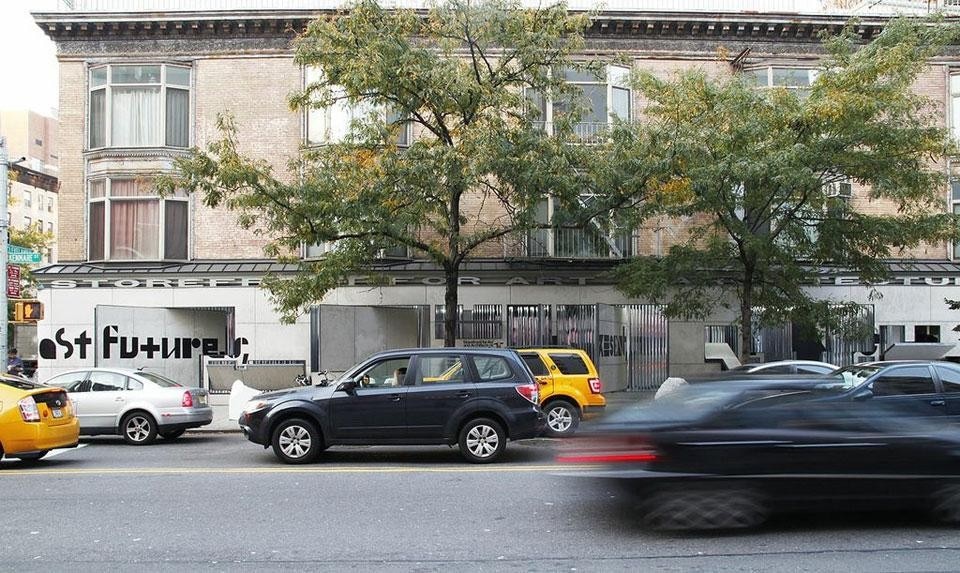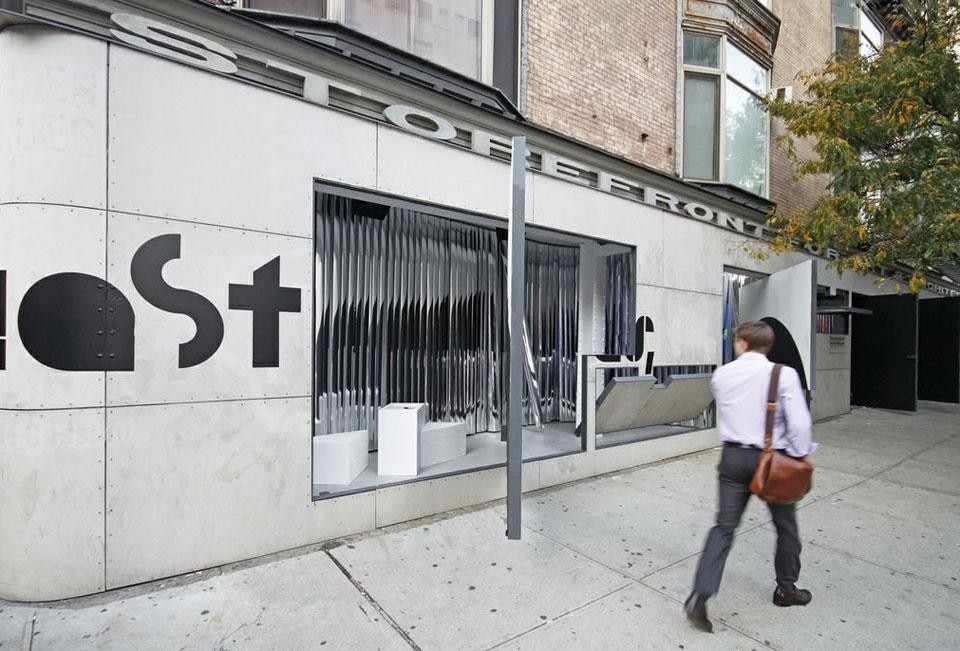The premise is clear: the curators presented a past vision of this city's then-future (such as Elizabeth Woods's 1961 Design Loitering essay or the Pneumatic Transit System proposed by Alfred Ely Beach in 1870) to a contemporary designer who was asked to reimagine its central terms for an altered future (such as dpr-barcelona's Altocumulus-Data-Structure Over Manhattan for 2035 or Snøhetta's Parks over Parks for 5012 [1]). Multiply these pairings by 101, add in a growing collection of audience-generated visionary content, place everything within the powerfully affective prismatic space designed by Leong-Leong, and Past Futures, Present, Futures is "complete." The physical manifestation of these projects' representations as well as the links between them require notable effort to unravel — with QR-coded links and "Random Contextual Information" panels scattered throughout the disorienting space of densely-packed reflective blinds, staggered video screens, and background audio tracks. While the logic of each of these pieces could be described in more detail, I'd rather take this opportunity to think through the general strategies of this exhibition in its present institutional context, especially given the fact that each passer-by isn't privy to the same explanatory walk-through by the curator that I was allowed.
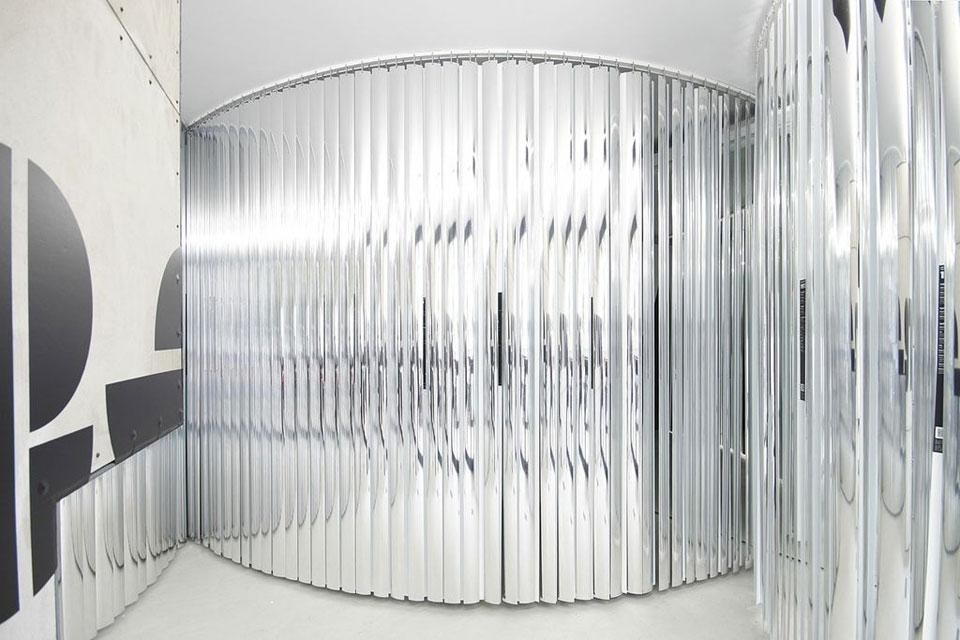
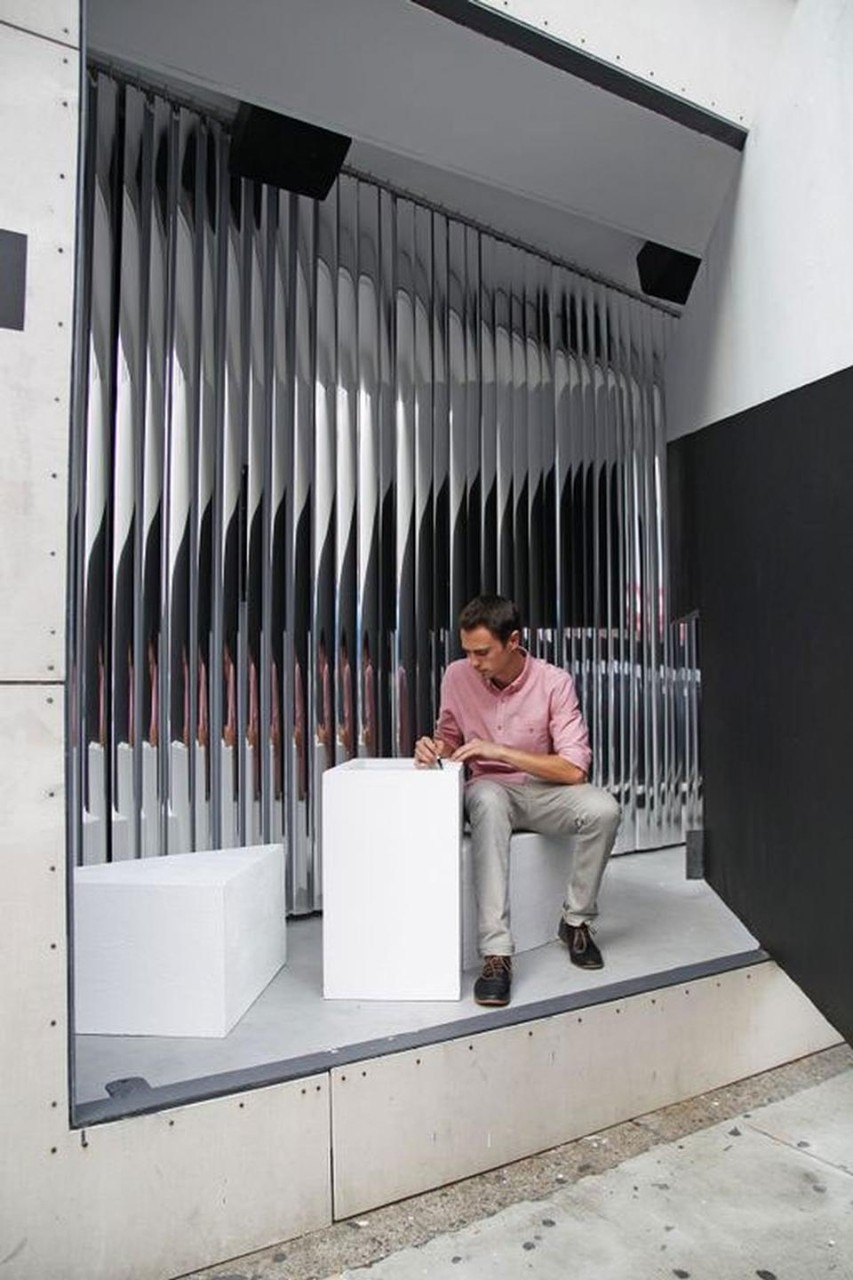
Franch i Gilabert told me that her curatorial strategy here was to frustrate any easy “consumption” of the projects within the exhibition, and my experience of this frustration was indeed surprisingly thought-provoking
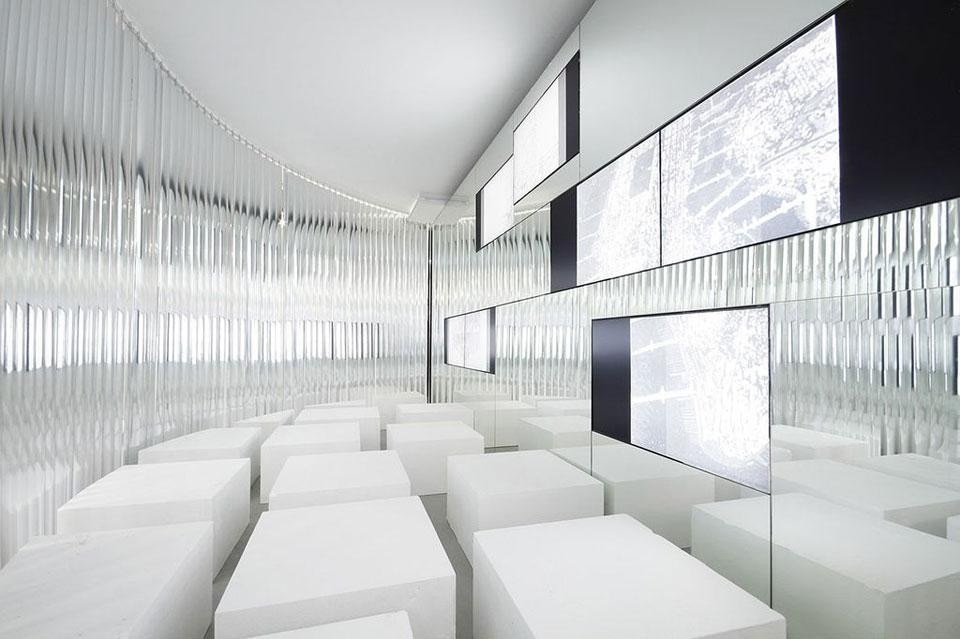
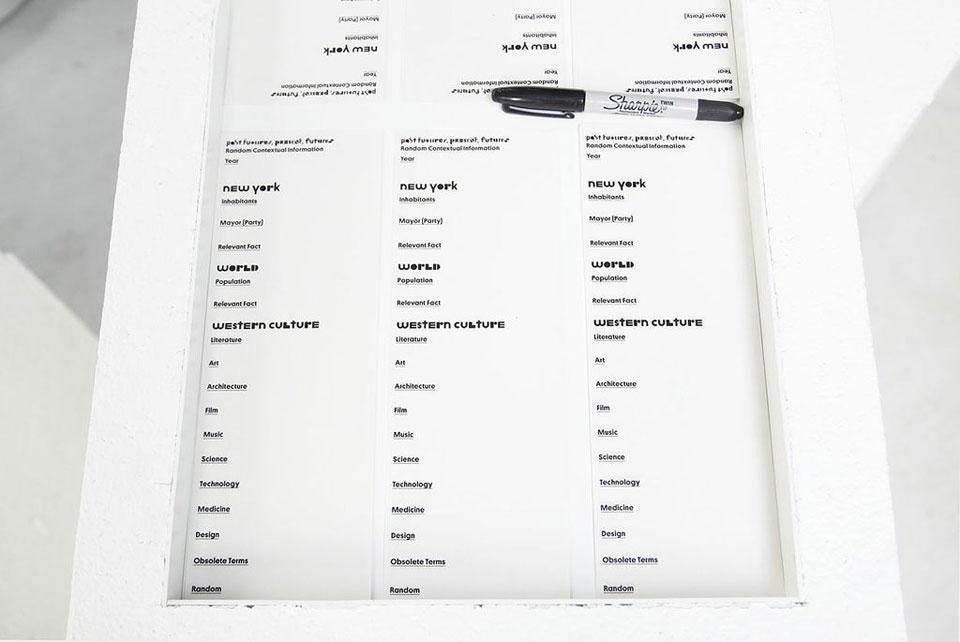
1. The examples chosen here were not explicit pairings themselves, but rather were chosen to represent the variety of themes and historical moments addressed broadly within the exhibition. The curators left the specific links between each "past future" and "present future" in the background, and I've chosen to treat them similarly.
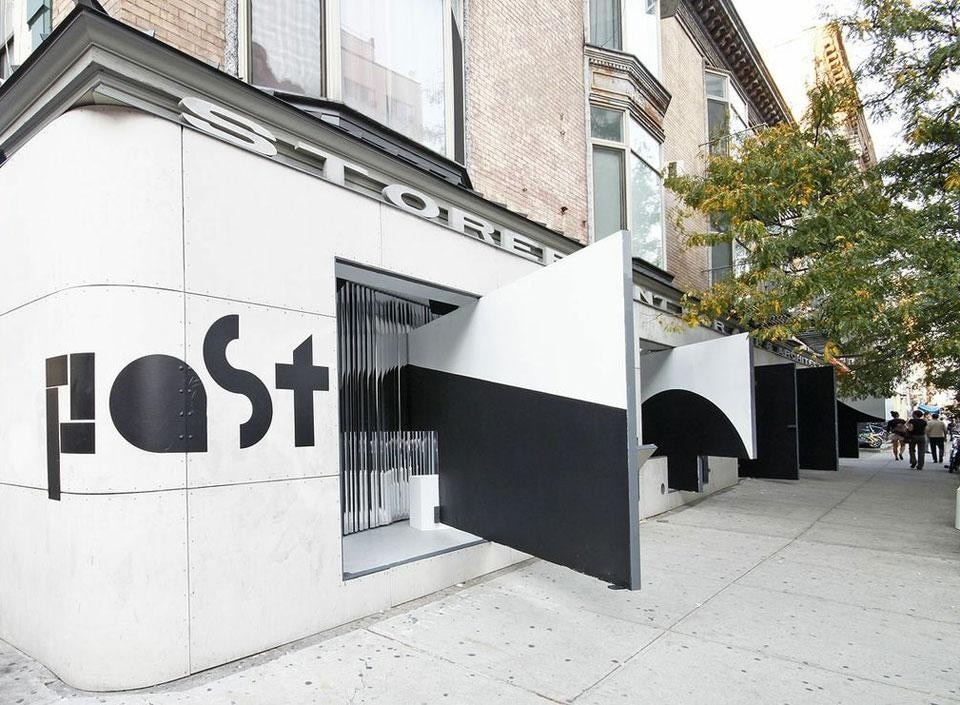
Past Futures, Present, Futures
Storefront for Art and Architecture
97 Kenmare Street, New York
